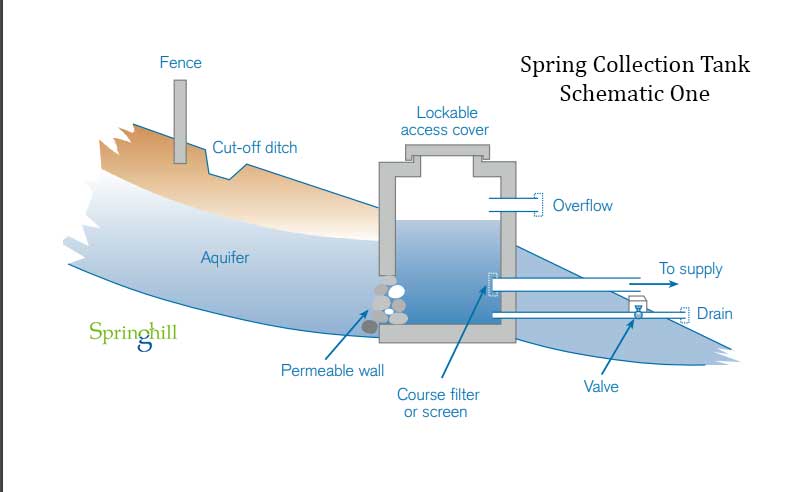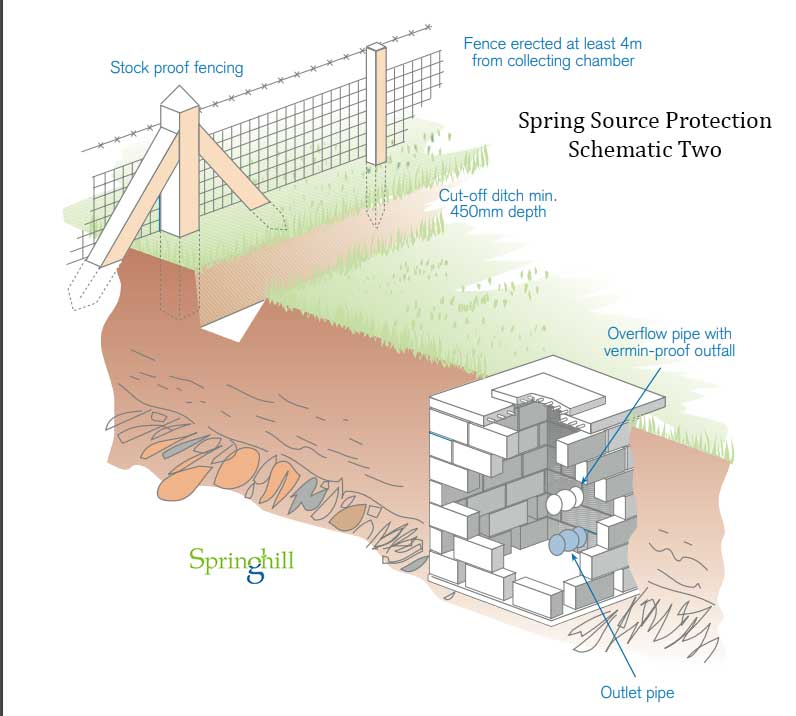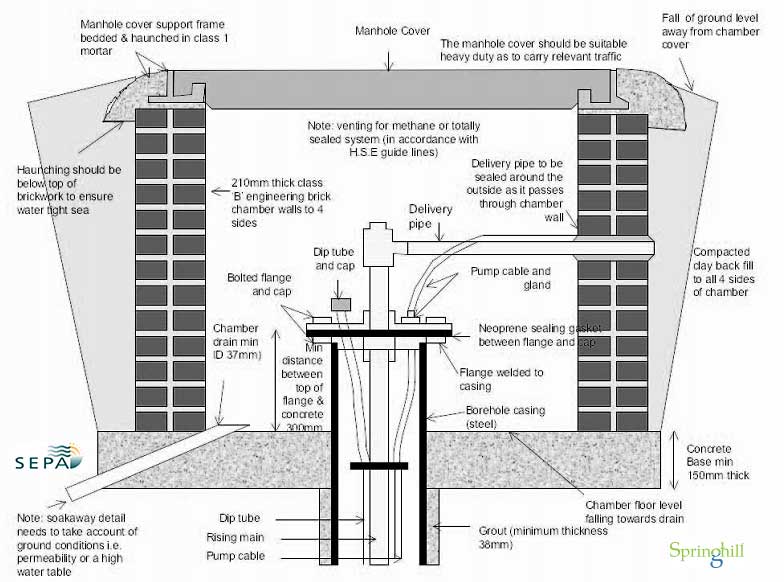True Springs are rare
Even when a spring is shown on a map as a spring, the chances are that it is in fact a surfaced derived sources. Springs are rare in the UK as they require a rare type of geology. In the vast majority of cases the water from these ‘springs’ rarely passes more than a meter below the surface. Even in those rare cases where the water rises from deep below ground, the most vulnerable point of contamination is where the water ‘springs’ from the ground and mixes with surface run off, especially after heavy rainfall or a snow melt.
True ‘spring water’ can be of good quality but it must be protected from possible contamination once it has reached ground level. In particular, it is necessary to consider the possibility of pollution from septic tanks or from agricultural activities.
Collection Chamber
A small collection chamber built over the ‘spring’, see Schematic One below, will offer some protection from surface water run-off, but the risk of the water containing pathogens will remain high. This is because water entering the collection chamber is likely to have already been contaminated.
However, building a collection chamber will offer some protection against surface pollution and will provide a small amount storage in periods of high demand and serve as a header tank. The collection chamber should be built so that the water enters through the base or the side. The top of the chamber must be above ground level and it should be fitted with a lockable watertight access cover.

Fenced off area around the Collection Chamber
An overflow must be provided appropriately sized to take the maximum flow of water from the spring. (See schematic Two below). The outlet pipe should be fitted with a strainer and be situated above the floor of the chamber. The chamber should be built of a material that will not impair water quality and be designed to prevent the entry of vermin and debris.
The area of land in the immediate vicinity of the chamber should be fenced off and a small ditch dug up-slope of the chamber to intercept surface run-off.
Take great care when digging around a spring source
We strongly advice that great caution is exercised when digging around a source. Disturbing the top layers of soul, a ditch, or a boulder above or below the point where the water springs to the surface could result in the water taking a new route. In some cases, this can result in the water course being changed permanently.

Acknowledgement: The primary source of information whilst preparing this document is Drinking Water Regulator in Scotland (DWRS).

